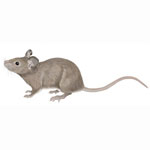READY TO GET STARTED?
REQUEST A FREE ESTIMATE
Fill out the form below or call (888) 466-7849 for a free, no-obligation estimate.
A: It is a frustrating situation to be in when you are concerned about problems from another source that you do not have any control over!
All animals need three items in order to be successful: food, water and shelter. If you can eliminate these, in most cases you can help control any issue. It sounds as if cutting the grass from the neighbor’s yard took away the shelter and food causing them to search for these sources elsewhere.
We suggest that if you have any outdoor feeders for birds or squirrels to move them away from your home. Also, if you have any water sources such as fountains, bird baths, etc, it would be helpful to move them as far away from the home as possible. Additionally, make sure that any pet food, bird seed or grass seed is stored in a tightly concealed, rodent proof container.
If you find that you notice evidence of animals or rodents in or around your home, call Northwest Exterminating. A pest prevention program or wildlife control program may be needed to remove the unwanted visitors from your home.

A: It is a frustrating situation to be in when you are concerned about problems from another source that you do not have any control over!
All animals need three items in order to be successful: food, water and shelter. If you can eliminate these, in most cases you can help control any issue. It sounds as if cutting the grass from the neighbor’s yard took away the shelter and food causing them to search for these sources elsewhere.
We suggest that if you have any outdoor feeders for birds or squirrels to move them away from your home. Also, if you have any water sources such as fountains, bird baths, etc, it would be helpful to move them as far away from the home as possible. Additionally, make sure that any pet food, bird seed or grass seed is stored in a tightly concealed, rodent proof container.
If you find that you notice evidence of animals or rodents in or around your home, call Northwest Exterminating. A pest prevention program or wildlife control program may be needed to remove the unwanted visitors from your home.